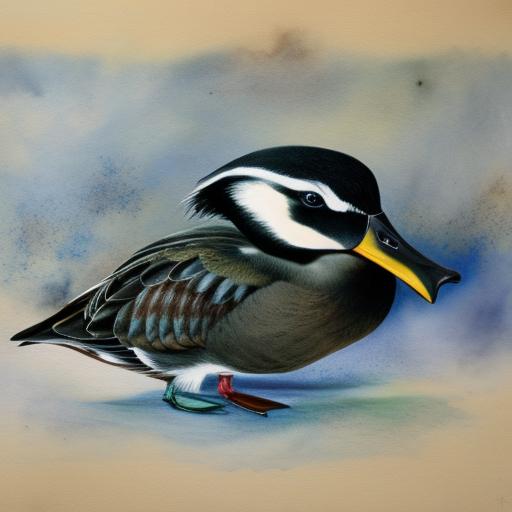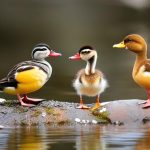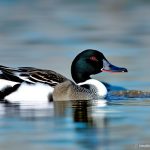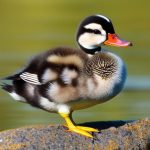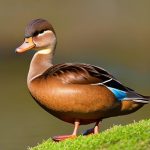Black wild duck breeds are a fascinating and diverse group of waterfowl that are known for their striking appearance and unique characteristics. These ducks are found in various parts of the world and are highly valued for their beauty and adaptability. The black wild duck breeds encompass a wide range of species, each with its own distinct traits and behaviors. From the sleek and elegant Black East Indies to the hardy and resilient Black Swedish, these ducks have captured the attention of bird enthusiasts and conservationists alike.
The black wild duck breeds have been domesticated for centuries, with some breeds being specifically bred for their meat, eggs, or ornamental value. Despite their domestication, many black wild duck breeds still retain their natural instincts and behaviors, making them a popular choice for hobby farmers and wildlife enthusiasts. In this article, we will explore the characteristics, habitat, behavior, conservation status, breeding, and importance of black wild duck breeds in ecosystems. By delving into these aspects, we can gain a deeper understanding of these remarkable birds and the role they play in the natural world.
Key Takeaways
- Black wild duck breeds are a diverse group of ducks known for their unique characteristics and behaviors.
- These ducks are easily recognizable by their dark plumage and distinctive physical features.
- Black wild duck breeds can be found in a variety of habitats, from freshwater lakes and rivers to coastal marshes and wetlands.
- Their diet consists of a variety of foods including aquatic plants, insects, and small fish.
- Conservation efforts are important to protect black wild duck breeds from threats such as habitat loss and hunting pressure.
Characteristics and Physical Appearance of Black Wild Duck Breeds
Black wild duck breeds are known for their striking and distinctive appearance. Their plumage is typically a deep, glossy black, which sets them apart from other duck species. The feathers of these ducks often have an iridescent sheen, giving them a beautiful and eye-catching quality. In addition to their black plumage, many black wild duck breeds also have bright orange or yellow bills and legs, adding a pop of color to their overall look.
These ducks come in a variety of sizes, with some breeds being small and compact, while others are larger and more robust. Their body shapes can also vary, with some breeds having a sleek and streamlined appearance, while others are more rounded and plump. Despite these differences, all black wild duck breeds share a certain elegance and grace in their movements, making them a joy to watch as they swim and forage in their natural habitats.
In terms of temperament, black wild duck breeds are known for being hardy and adaptable. They are able to thrive in a wide range of environments, from wetlands and marshes to backyard ponds and lakes. Their adaptability has made them a popular choice for farmers and hobbyists looking to raise ducks for meat, eggs, or ornamental purposes. Overall, the physical characteristics of black wild duck breeds make them a truly unique and captivating group of waterfowl.
Habitat and Distribution of Black Wild Duck Breeds
Black wild duck breeds can be found in a variety of habitats around the world. They are often associated with wetlands, marshes, rivers, and lakes, where they can find ample food and nesting sites. These ducks are highly adaptable and can thrive in both natural and human-altered landscapes, making them a common sight in agricultural areas and urban environments.
The distribution of black wild duck breeds varies depending on the species. Some breeds are native to specific regions, while others have been introduced to new areas through human intervention. For example, the Black East Indies duck is native to Southeast Asia, while the Black Swedish duck has been widely distributed throughout Europe and North America. Regardless of their origins, black wild duck breeds have proven to be resilient and resourceful in a wide range of habitats.
Conservation efforts are crucial for protecting the natural habitats of black wild duck breeds. Wetland conservation, habitat restoration, and pollution control are all important measures for ensuring the long-term survival of these ducks. By preserving their natural habitats, we can help ensure that black wild duck breeds continue to thrive in the wild for generations to come.
Behavior and Diet of Black Wild Duck Breeds
Black wild duck breeds exhibit a range of behaviors that are both fascinating and unique. These ducks are highly social animals and can often be found in large flocks, especially during migration or breeding season. They communicate with each other through a variety of vocalizations and body language, which helps them coordinate their movements and activities.
In terms of diet, black wild duck breeds are omnivorous and will consume a wide variety of foods. Their diet typically consists of aquatic plants, insects, small fish, and crustaceans. They are also known to forage on land for seeds, grains, and other plant matter. Their ability to adapt their diet to different environments has contributed to their success as a species.
During the breeding season, black wild duck breeds engage in elaborate courtship displays to attract mates. Males will often perform intricate dances or vocalizations to impress females and establish their dominance within the flock. Once a pair has bonded, they will build a nest in a secluded area near water and take turns incubating the eggs. The chicks are precocial, meaning they are born with their eyes open and are able to leave the nest shortly after hatching.
Overall, the behavior and diet of black wild duck breeds reflect their adaptability and resourcefulness as waterfowl. Their social interactions, feeding habits, and reproductive strategies all contribute to their success as a species in diverse habitats around the world.
Conservation Status and Threats to Black Wild Duck Breeds
The conservation status of black wild duck breeds varies depending on the species and their specific geographic range. While some breeds are considered to be of least concern in terms of conservation status, others are facing significant threats to their populations. Habitat loss, pollution, hunting, predation, and competition with invasive species are all factors that can impact the survival of black wild duck breeds.
Wetland degradation is one of the most pressing threats to black wild duck breeds. As human development continues to encroach on natural habitats, wetlands are being drained or filled in to make way for agriculture, urbanization, and infrastructure projects. This loss of critical habitat can have devastating effects on the populations of black wild duck breeds that rely on wetlands for breeding, feeding, and shelter.
In addition to habitat loss, pollution is another major threat to black wild duck breeds. Pesticides, heavy metals, oil spills, and other pollutants can contaminate the waterways where these ducks live and feed. This can lead to declines in food availability, reproductive success, and overall health for black wild duck populations.
Conservation efforts are essential for protecting black wild duck breeds from these threats. Wetland restoration projects, pollution control measures, hunting regulations, and captive breeding programs are all important strategies for safeguarding the future of these ducks. By raising awareness about the conservation needs of black wild duck breeds, we can work towards ensuring that they continue to thrive in the wild for generations to come.
Breeding and Reproduction of Black Wild Duck Breeds
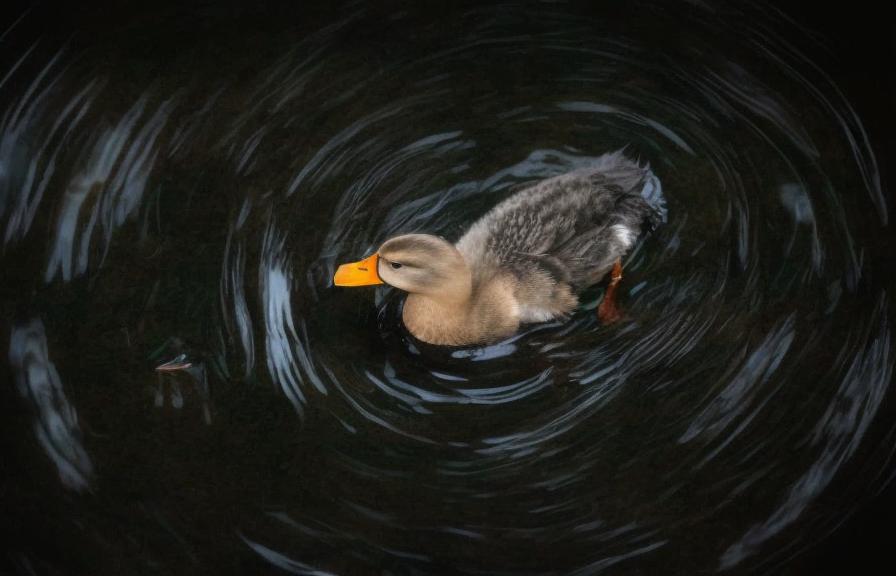
Breeding and reproduction are crucial aspects of the life cycle of black wild duck breeds. These ducks typically breed in the spring or summer when food is abundant and environmental conditions are favorable for raising young. Males will engage in elaborate courtship displays to attract females and establish pair bonds. These displays can include vocalizations, head bobbing, wing flapping, and other behaviors designed to impress potential mates.
Once a pair has formed, they will seek out a suitable nesting site near water where they can build a nest out of grasses, reeds, and other plant materials. The female will lay a clutch of eggs over several days, with each egg being carefully incubated by both parents. Incubation typically lasts around 28 days, during which time the parents will take turns sitting on the eggs to keep them warm and protected.
After hatching, the chicks are precocial and will leave the nest shortly after drying off. They are able to feed themselves and will follow their parents as they forage for food in the surrounding area. The parents will continue to protect and care for the chicks until they are old enough to fend for themselves.
Breeding success is closely tied to the availability of suitable habitat and food resources for black wild duck breeds. Wetlands provide important nesting sites and food sources for these ducks, making wetland conservation efforts crucial for supporting healthy breeding populations. By understanding the breeding behaviors and reproductive needs of black wild duck breeds, we can work towards creating environments that support successful breeding and population growth.
Importance and Role of Black Wild Duck Breeds in Ecosystems
Black wild duck breeds play an important role in ecosystems as both consumers and contributors to biodiversity. As omnivorous waterfowl, these ducks help control insect populations by feeding on aquatic invertebrates such as mosquitoes and midges. They also consume seeds from aquatic plants, which helps disperse seeds throughout wetland habitats.
In addition to their role as consumers, black wild duck breeds also contribute to ecosystem health through their interactions with other species. Their movements through wetlands can create pathways that benefit other wildlife by opening up new feeding areas or creating disturbances that promote plant growth. They also serve as prey for predators such as foxes, raccoons, and birds of prey, contributing to the overall food web within wetland ecosystems.
Furthermore, black wild duck breeds have cultural significance for many communities around the world. They have been domesticated for centuries and are valued for their meat, eggs, feathers, and ornamental qualities. In some cultures, these ducks are associated with symbolism or traditions that highlight their importance as part of human history and heritage.
Overall, black wild duck breeds play a vital role in maintaining the balance and diversity of wetland ecosystems. By understanding their ecological importance and implementing conservation measures to protect their habitats, we can ensure that these remarkable birds continue to thrive in the wild for future generations to enjoy.
In conclusion, black wild duck breeds are a diverse group of waterfowl that captivate us with their striking appearance, unique behaviors, and ecological significance. From their glossy black plumage to their adaptability in various habitats, these ducks have earned a special place in our hearts and in the natural world. By understanding their characteristics, habitat needs, behaviors, conservation status, breeding habits, and ecological roles, we can work towards ensuring that black wild duck breeds continue to thrive in the wild for generations to come. Through conservation efforts and public awareness, we can celebrate the beauty and importance of these remarkable birds while working towards a future where they can flourish in healthy wetland ecosystems around the world.
If you’re interested in learning more about raising ducks, you might also want to check out Poultry Wizard’s article on the importance of providing a suitable coop for turkeys. Understanding the housing needs of different poultry breeds, including ducks and turkeys, is crucial for their well-being and productivity. You can read more about it here.
FAQs
What are black wild duck breeds?
Black wild duck breeds are a type of duck that have predominantly black feathers. These ducks can be found in various regions around the world and are known for their striking appearance.
What are some examples of black wild duck breeds?
Some examples of black wild duck breeds include the Black East Indie, Cayuga, and Swedish Black duck. These breeds are known for their unique black plumage and are popular among duck enthusiasts.
What is the origin of black wild duck breeds?
The origin of black wild duck breeds can vary depending on the specific breed. However, many of these ducks have been bred for their black plumage and have been developed over time through selective breeding.
What are the characteristics of black wild duck breeds?
Black wild duck breeds typically have black or dark-colored feathers, with some variations in shade and iridescence. They are known for their hardiness, adaptability, and foraging abilities.
Are black wild duck breeds suitable for domestication?
Yes, black wild duck breeds are suitable for domestication and are often kept on farms and in backyard settings. They are valued for their meat, eggs, and ornamental qualities.
What are the conservation status of black wild duck breeds?
The conservation status of black wild duck breeds can vary depending on the specific breed and its geographic location. Some breeds may be considered at risk or in need of conservation efforts, while others may be more common and widespread.
Meet Walter, the feathered-friend fanatic of Florida! Nestled in the sunshine state, Walter struts through life with his feathered companions, clucking his way to happiness. With a coop that’s fancier than a five-star hotel, he’s the Don Juan of the chicken world. When he’s not teaching his hens to do the cha-cha, you’ll find him in a heated debate with his prized rooster, Sir Clucks-a-Lot. Walter’s poultry passion is no yolk; he’s the sunny-side-up guy you never knew you needed in your flock of friends!

